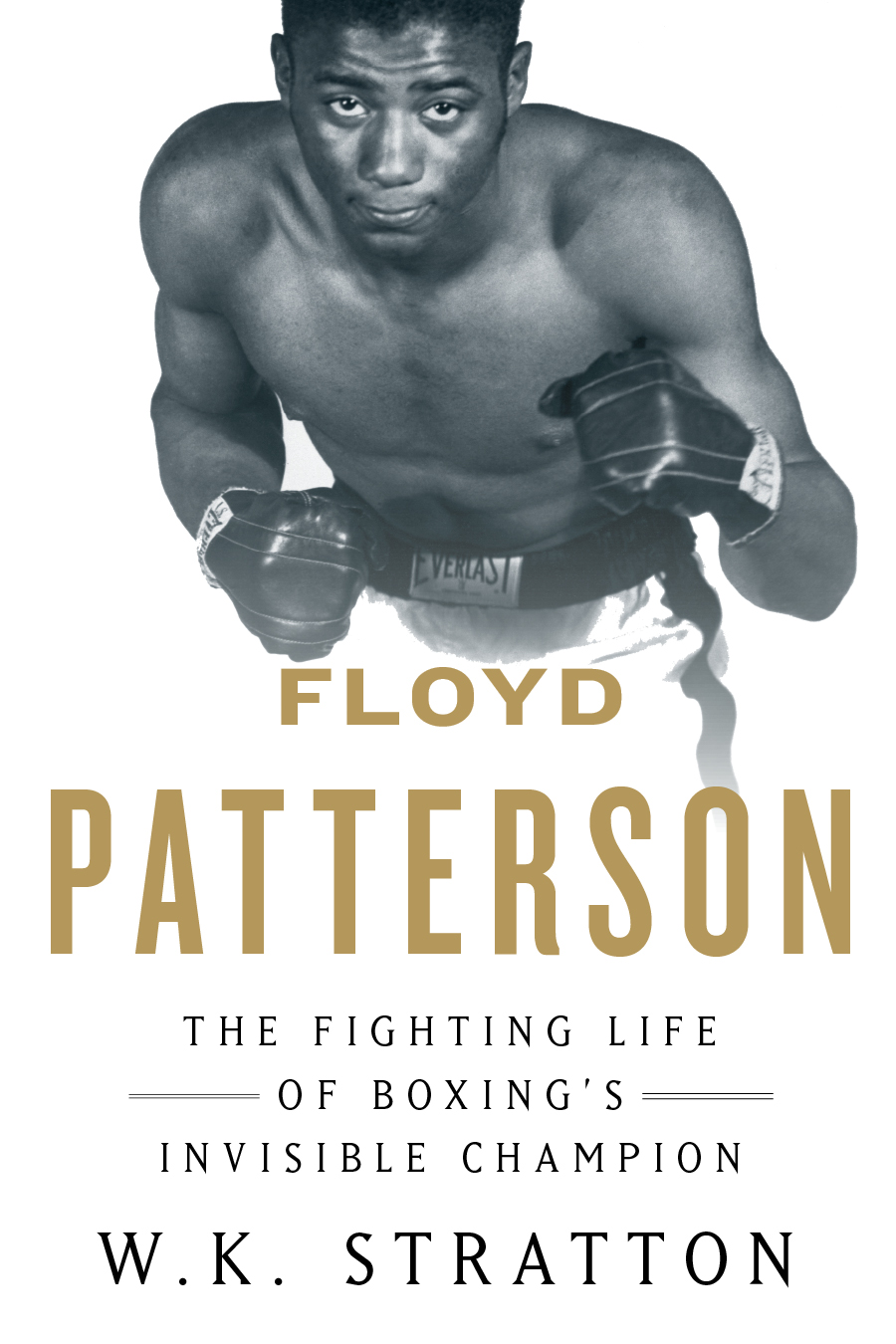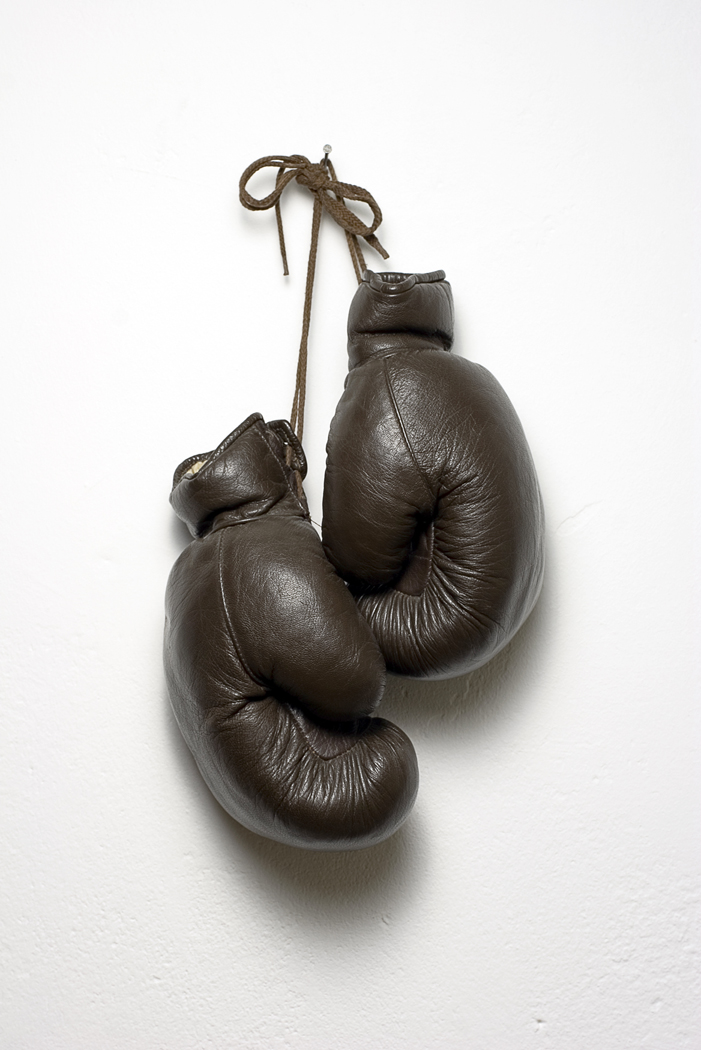
Floyd Patterson
The Fighting Life of Boxing's Invisible Champion
A Q&A With Author W.K. Stratton
Why Floyd Patterson?
Patterson was an important figure in
American sports. He was among the greatest amateur boxers the U.S. has
ever produced. His achievements along with the other members of the 1952
U.S. Olympic Boxing Team have been largely forgotten. Some of Patterson’s
pro accomplishments likewise have been forgotten: the youngest heavyweight
champ, the first to win the heavyweight title twice, etc. Also, his
contributions to the civil rights movement have been overlooked. Plus
there were other elements of his story that are compelling: his overcoming
childhood trauma, his relationship with his manager Cus D’Amato, his
relationships with rivals like Muhammad Ali and Sonny Liston, and so forth.
Much about Patterson had been lost in the glare of Muhammad Ali’s career.
I felt as if it was time to bring Floyd back into the light.
What Is Your Interest in Floyd Patterson?
I was a kid and young man during the
last golden era of professional boxing, the era that began roughly around 1960
and ended more or less in 1987 with the Hagler-Leonard fight. I was a fan.
As a result, I saw some of the greatest fighters the sport has ever known.
Patterson was an important figure during that era, and of all those great
fighters, he arguably had the most interesting back story. On the surface,
he seemed to be the least likely of prizefighters. As Gay Talese told me,
there were any number of endeavors Floyd could have entered and been successful,
so why boxing? The answer is, in Floyd’s case, it couldn’t be anything
else because boxing had a meaning to him that nothing else in life could match.
My own experience in the boxing gym has exposed to me men and women who have
that same sort of feeling. So Patterson’s story fascinated me for years,
and the more I learned about him, the more fascinated I became. Finally I
took the plunge and wrote the book. I did an extraordinary amount of
research on the book. Relatively few of the men Floyd fought were still
alive or were capable of being interviewed at the time of my research, but I did
receive valuable insight from an afternoon I spent with one of them, Roy “Cut ‘n
Shoot” Harris. A day I spent with Gay Talese, who likely penned more
insightful words about Patterson than any other journalist, was extremely
revealing. A 1950s boxer (who never fought Patterson but knew him
socially) turned actor named Jim Brewer shared stories about Floyd from social
occasions in Hollywood that revealed a great deal about Patterson’s personality.
I was never able to interview Norman Mailer (although a couple of people close
to him did their best to arrange it during his waning days), but I was able to
get access to his letters and other personal items in the Harry Ransom Center at
the University of Texas. I spent a couple of days poring over handwritten
notes and other fascinating tidbits – even phone numbers scrawled on matchbook
covers – that pertained to Patterson fights. Mailer was quite the hoarder
when it came to items related to his career, and that’s good. I found bits
and pieces here and there that provided good background material, even though I
didn’t quote them directly in the book, such as letters in the collection of the
New York Public Library to Floyd from the one-time director of the Wiltwyck
School. That sort of thing. But the biggest part of the research was
working my way through thousands of newspaper and magazine articles written
about Floyd and his rivals, many of which wound up in the wonderful collection
of the Dolph Briscoe Center for American History at the University of Texas. I
also read dozens of books for this project.
Why Do You consider Patterson To Be “The Invisible
Champion”?
Of course, the primary reference is to
Ralph Ellison’s classic novel, Invisible Man.
You may recall that the unnamed narrator of that great novel lives in a “hole”
in a basement, cut off from people. Patterson found peace as a child in a
kind of hole near a subway station, this one used to store tools by the train
crews. Like the narrator of the novel, young Floyd found some peace in his
hole. That novel appeared about the time Floyd was winning his Olympic
gold medal, and, among its other attributes,
Invisible Man seems to speak for a generation of
young black men who find themselves socially invisible. Growing up in
Brooklyn, Floyd could identify with this sense of invisibility. Even when
he became champion – one of the most famous people in America – he found himself
treated as if he was invisible when he tried to get a meal at Kansas City
restaurants. So: the connection to the novel. But there’s more.
As a champ, Floyd liked to stay out of the public eye as much as he could.
He trained incessantly at remote training camps, even when he didn’t have a
fight scheduled. He always felt uncomfortable when people looked at him,
so he liked to stay “invisible” as much as he could. Also, against the
glare of Ali’s light, Floyd’s accomplishments as champion have become
invisible, especially to younger readers. So there are a number of ways in
which Floyd is the invisible champ.
How Would Floyd Want To Be Remembered?
Foremost, as a good American. He
told former boxer and actor Jim Brewer that his proudest achievement was winning
a gold medal at the 1952 Olympics. That meant more to him than becoming
heavyweight champion of the world because the latter was an individual
accomplishment: He felt like he won the gold medal for all of America.
I think Floyd would also be proud of his contributions to the civil rights
movement in the 1950s and ‘60s, and I think he would be proud that he didn’t
give in to more radical elements in the latter 60s and early 70s, even though it
was fashionable to do so. I also think Floyd would like to be remembered
as a good Catholic. And, very important, as a “boxing man,” as he described
himself, someone who received all the opportunities in life that he did because
of boxing and someone who gave back all he could to the sport.
How Important Was Floyd To The Civil Rights
Movement?
Floyd was very important, although he
aligned himself with the more moderate factions of the movement than with the
more militant. He gave financial support to Catholic clergy attempting to
desegregate Arkansas at a time when no black athletes of his stature were taking
that sort of political stand. He refused to fight in a segregate arena in
Miami at a time when Miami was much more of a Southern city than the
cosmopolitan city it has since become. No other black athlete could or
would do that at the time. He supported Martin Luther King and traveled to
Birmingham, Alabama, at the peak of the civil unrest there to show support for
King’s civil rights activities. He was selected for lifetime membership in
the NAACP for his work and became a leading fundraiser for that organization.
On a more personal level, he was active in supporting both the Wiltwyck School
and Floyd Patterson House, two organizations that functioned to help troubled
New York City boys – the majority of whom were black – overcome crime and
violence while receiving an education.

W.K. Stratton. All rights reserved.